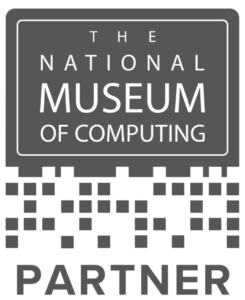Service integration and management (SIAM) is currently a very hot IT service management (ITSM) topic, and the drive is on for IT organisations (that will be helped by it) to start investigating and adopting some of the SIAM good practice – i.e. to co-ordinate their supply chain and manage suppliers in a collaborative and effective manner.
What is SIAM?
SIAM is a layer of management and control over a number of third-party suppliers, and there are four main models which can be used:
- Retained client as SIAM – where the retained organisation manages all suppliers and co-ordinates the SIAM function itself.
- Single supplier – where the Managed Service Provider (MSP) provides all of the service and the SIAM layer of management.
- Service guardian – where an MSP provides the SIAM layer and one or more delivery functions, as well as managing other suppliers.
- Separate service integrator – where an MSP provides the SIAM layer (but with no delivery function) and manages all the other suppliers.
As to which is the best model for your company, you’ll need to consider the pros and cons of each to reach your desired approach and then transition to a more co-ordinated service-supplier landscape as you prepare for SIAM. The real challenge here is to identify this need and then to work towards this new state with clarity and focus both internally and with suppliers.
How to Approach SIAM
SIAM needs to create value, as opposed to being a simple supply chain mechanism. This is growing in importance now as:
- SIAM contracts are often awarded separately from service provider contracts.
- Outsourcing contracts are now generally shorter (2-5 years instead of >10 years).
- There’s an increasing number of outsourcers competing.
It’s also important to create a vision to determine strategy and the type of SIAM model required for business needs, rather than simply creating SIAM because it’s the current buzzword. Thus a clear structure and governance model is required for a successful implementation of SIAM.
SIAM Implementation
For a SIAM implementation, typically the approach is “from the bottom up” in an effort to “keep the lights on”, whereas the purist approach is for SIAM to be designed from the top down, i.e. service strategy.
With conflicting approaches, the best approach is to commence at both the top and bottom, working towards the middle. This enables a solution to meet immediate requirements, whilst also providing the building blocks to allow the implementation of the complete SIAM model. Such an approach also helps manage the inherent challenges within SIAM, in particular:
- When applying proprietary SIAM models to a diverse multi-supplier environment, due to the complexity of mapping everything together there will be a limit to flexibility, end-to-end reporting, tooling integration, and reporting.
- Providing awareness of potential lock-ins with SIAM and service providers – for example, if the data and tools are owned by providers, any organisation replacing said providers face starting from scratch. Would there be a desire to absorb such cost in the future?
There’s also a need to clearly define services that businesses can understand and relate to, to enable SIAM in managing providers to the organisation’s requirements. If need be, via the use of “tension commercial architecture”, i.e. contracts drafted in a manner that encourages suppliers to behave in the desired manner with each other and towards the organisation.
Boundaries of responsibility and clarity on processes are also key to a successful SIAM implementation. Two causes of SIAM failures often highlighted are:
- Constraints, where it’s for retained IT organisation to resolve.
- Inefficiencies, where it’s for the supplier to resolve.
It should also be remembered when embarking on a SIAM roadmap, not to exclude other IT functions that may not be in the SIAM scope. Knowing how they and SIAM will interact is key. If no direct link between them and SIAM is defined, there will be a gap in the service provision (to the business) as the organisation will no doubt need a number of their services. Again, returning to the need for understanding the services the organisation is consuming and how.
Advice for Getting Started with SIAM
When starting out with SIAM, there are a number of key points to recognise, understand, consider, and address:
Positioning SIAM within the organisation:
- What the organisation does now and how contracts are currently governed.
- The many variables to consider prior to positioning SIAM.
- The complexity of the services provided often dictate the SIAM approach.
- If outsourcing is the initial answer to providing services, it’s key to up-skill internally following outsourcing to better understand and manage the services.
SIAM strategy and design:
- Prior to creating a SIAM model, it’s key to identify the problem first and what needs solving.
- Identify the CIO drivers – cost, quality, agility, the move away from a monolithic supplier to managed best in class, etc. You need to be able to answer: “Why SIAM?”.
- Question whether there’s a need for particular SIAM skills and knowledge to enable a successful SIAM introduction in your organisation. Many of the skills required may already exist in the organisation under roles that SIAM may need to function.
- The devil is in the detail. Be sure to set realistic expectations.
- SIAM is a journey of evolution to achieve maturity. Remember that the solution is not delivered by simply introducing SIAM.
Tooling and reporting:
- Reporting should be bottom up. Providers should report to SIAM, SIAM should report to the business, and ultimately the data should be owned by the business.
- Some large clients could be in a position to insist on single tools, but how will multiple licensing be funded? Be sure to question this.
- Irrespective of approach, standardising across organisations is key e.g. incident closure codes across all supplier systems.
SIAM and service level agreements (SLAs):
- Metrics were traditionally about technical issues. With SIAM they’re about behaviours, culture, and people. A clear vision is required to determine the best metrics to use.
- Are your SLAs realistic? They need to be driven from the business but, at the same time, the business needs to understand what they mean, e.g. is 99.999% availability a “must have” or a “nice to have”?
- Are the SLAs driving the right behaviours amongst providers or are they playing each other off to hit their own targets?
- Are we discussing openly with all vendors/stakeholders? Are we moving towards continual service improvement (CSI)? Consider having all share the credit or debit.
- When creating a multiple supplier model, it’s important to remember that services are likely to sit across more than one provider.
- You need a good service desk and knowledge management capabilities with the right tools to enable effective management of records across different providers.
- Business need to be sufficiently mature before multi-sourcing and potentially losing their internal subject matter experts.
5 Important Things to Remember About SIAM
In addition to the above, it’s important to recognise that:
- SIAM is not a silver bullet – any problems currently in place will not disappear by swapping what’s in place with SIAM. This is because swapping what’s in place with a different set of individuals/organisations is unlikely to remove any inefficiencies or constraints.
- Successful SIAM implementation requires a collaborative approach – a service is in effect a supply chain that may cross several reporting lines. Customers/users need to be consulted and involved, as well as stakeholders across the IT “supply chain”. Providers need to collaborate to ensure value can also be delivered to the business.
- Many providers provide their own SIAM model and method of working for each ITIL process – This can save a lot of time from creating something new should the organisation be immature but will bring with it many challenges if the organisation does not adapt its own way of working.
- A visual representation of the structure of the provided services is useful to identify responsibilities – a picture can be vastly more descriptive than a 20-page document and will help nail down roles and responsibilities.
- Approach SIAM from both a top down and down top perspective – top down will help set vision, strategy, and help achieve medium to long term organisational goals, whilst a down top approach will ensure focus remains on current paint points.
In Summary
SIAM is an opportunity to realise improvements in efficiency and quality, as well as offering practical options on the co-ordination of complex IT supply chains and interlinked systems. Simply replacing what an organisation already does or has is not the answer and will not achieve success or tangible improvements.
Processes need to be adapted to current working cultures and enhanced over time. This means accepting that different providers are likely to apply the same process differently and a need for service level management (SLM) remains as SIAM does not replace the need for SLM.
So, service delivery still needs to be managed against service levels and those service levels need to remain relevant to the service received by the users. With SIAM’s role being to consider these complex and multi-level scenarios and consider impacts prior to defining service levels. This can extend to using financial incentives across all providers when sharing success, whilst penalising all where service failure exists. Such mechanisms are essential to encourage real collaboration across the supplier landscape.
Further Reading
You may find the following SIAM resources useful:
- SIAM Principles & Practices book
- 10 Key Steps for SIAM Success
- How to Build an Effective SIAM process model
- An Introduction to SIAM and ITIL
- SIAM Professional Body of Knowledge

Barclay Rae
Barclay Rae has extensive experience as a consultant, analyst and subject matter expert in IT Service Management. He is the Lead Editor of ITIL 4 Create Deliver Support (CDS) Managing Professional guide, a member of the ITIL 4 Architect team and a co-author of ITIL Practitioner.
He also has considerable business and management experience in the industry, both as a consultancy vendor and also working with industry bodies and vendors such as SDI, AXELOS, APMG, and Axios. He brings industry and subject knowledge to ITSMF UK's strategic direction, as well as practical experience and commercial skills in running a small business organisation.



